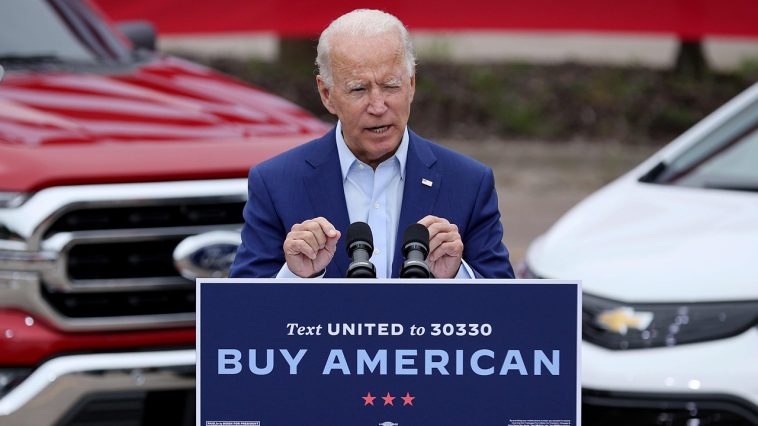LISTEN HERE:
According to recent plans, the Biden administration plans to moderate measures concerning exhaust emissions this coming spring. These regulations were previously tightened to hasten the shift toward electric vehicles (EVs). This strategic move aims to gain support from both unions and the vehicle manufacturing sector. The proposed change in rules will provide automobile manufacturers more flexibility and time in transitioning to electric vehicle production.
Under the new relaxed guidelines, manufacturers are expected to complete the majority of their shift to EV production beyond 2030. This timeline is an extension from the few-year framework set by the currently existing regulations. The revised timeline is expected to facilitate a smoother transition towards environmentally-friendly vehicle production.
Since his campaign days, President Biden has continuously worked to win the confidence of union workers, placing special emphasis on the United Auto Workers union. The United Auto Workers extended their endorsement to President Biden in the recent Presidential elections of 2024. However, there is an underlying apprehension among them regarding the implications of a shift to EVs on their existing job structure.
The potential shift towards EV manufacturing poses a challenge because these vehicles require less labor for production and do not fall under the same union contract guidelines. Thus, the auto workers are rightfully apprehensive about how this could potentially affect their jobs.
The current guidelines set forth by the Environmental Protection Agency were introduced the previous spring. The rules are designed in such a way that when they are fully operational, automakers would face pressure to release a significant amount of zero-emission vehicles within a limited timeframe.
As per these plans, around 67% of new car sales would be powered by electricity by the year 2032. This is a substantial leap from the current figure of just 7.6%. This indicates the ambitious scope of this green transition in the automotive industry.
Despite these ambitious objectives, Biden’s administration’s electrical vehicle goals have been met with significant resistance. This is mostly due to low consumer demand, which has seen a modest increase in sales.
An examination of sales data from 2023 reveals this dynamic – sales of EVs only grew marginally from 3.1% in January 2023 to 3.6% in December 2023. This increase in sales occurred despite a growth in inventory, which rose from 2.8% to 5.7% within that same year.
Furthermore, the administration’s attempts to expand the country’s EV charging infrastructure have been fraught with administrative obstacles. Consequently, this has significantly constrained establishment of charging stations.
Despite committing a budget of $7.5 billion for this initiative, a mere two charging stations have come to fruition as of December. This depicts a challenging scenario for transitioning to EVs in the context of current infrastructure.
This situation underlines the difficult balancing act the Biden administration faces – On one hand, they need to advance their environmental goals by promoting electric vehicles. On the other, they must also accommodate industry stakeholders such as auto manufacturers and unions.
In navigating these complexities, the proposed easing of regulations is designed to offer automakers more flexibility. This adjusted timeline may ease industry concerns and potentially stimulate the accelerated production of electric vehicles in the longer term.
However, meeting the objective of a largely electrified automotive landscape by 2032 remains a considerable challenge. It would require not only heightened production capabilities but also successful resolutions of labour and infrastructure concerns involved in this ambitious shift.
More Articles: Real News Now


